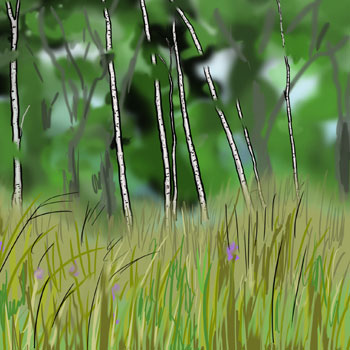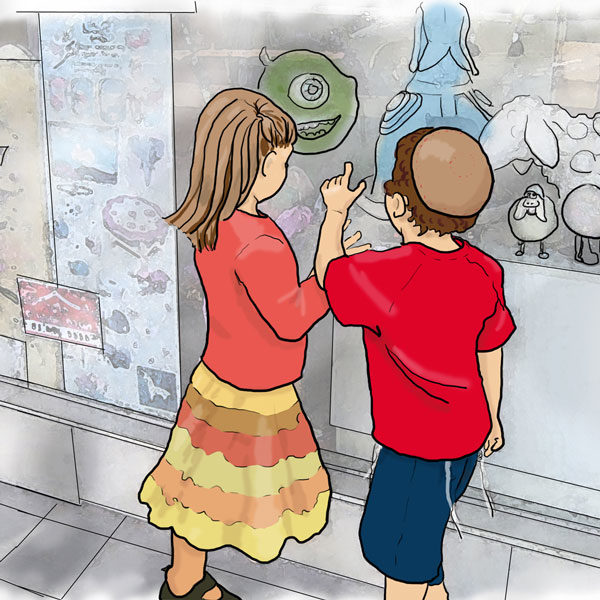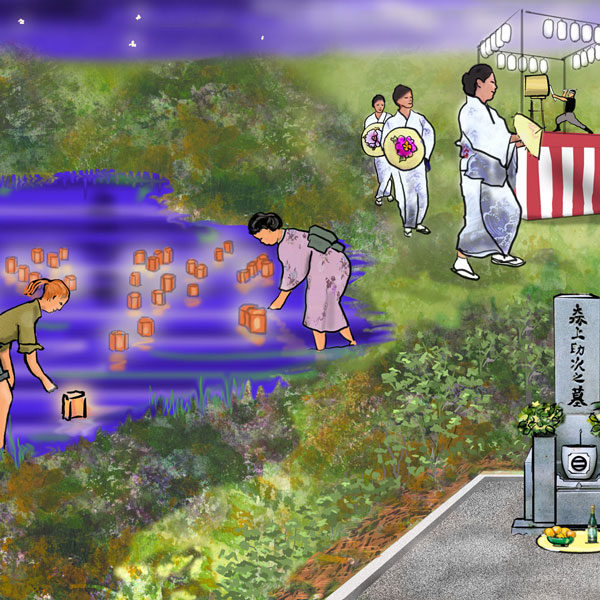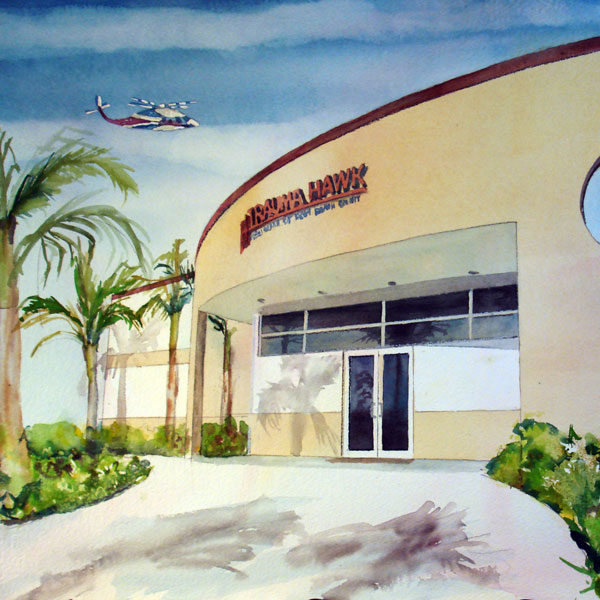Artist in Residence at Necedah National Wildlife Refuge
These digital paintings are part of a set of twenty drawings that I created while working as an Artist in Residence at Necedah National Wildlife Refuge. I used the digital drawings as a means to journal my experiences as well as a way to educate young visitors to the refuge about the biodiversity at Necedah.
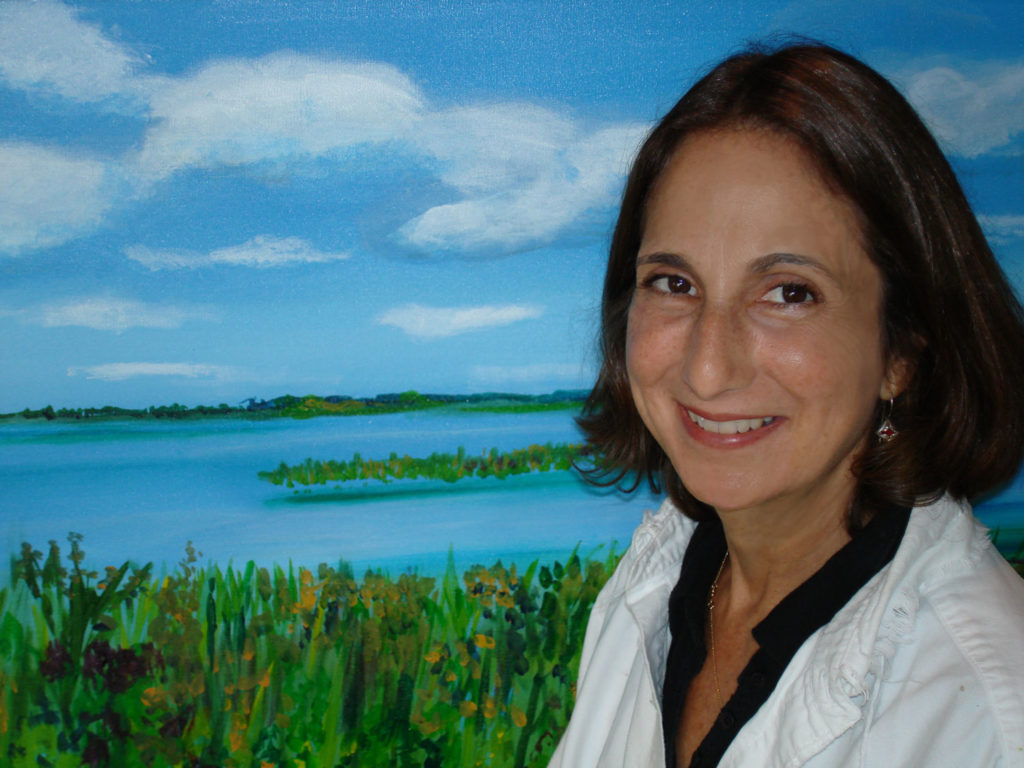
Artist In Residence Diary
Artist in Residence at Neciedah National Wildlife Refuge in Wisconsin
Observations written for visitng school children
Caren Hackman
This book chronicles my experiences as an artist in residence at Necedah National Wildlife Refuge. It is written as an introduction for young people to help them learn about the refuge as well as about my activities as an artist.
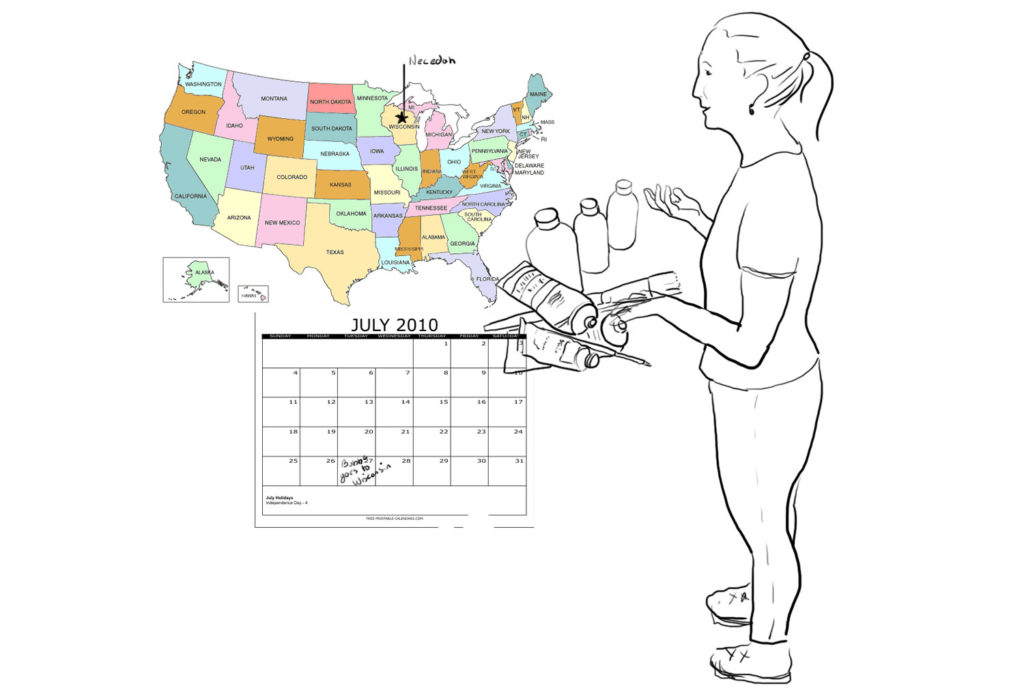
What Should I Pack?
I am an artist.
I have been getting ready for a trip that I will be taking to a wildlife refuge in Wisconsin on July 27. I am very excited about this trip.
For two weeks I will serve as the Artist in Residence at Necedah National Wildlife Refuge in Wisconsin. I will draw and paint the special birds, turtles, butterflies and landscape at the refuge.
I will fly, from my home in Florida, on an airplane to Wisconsin and stay at a hotel near the refuge. Everyday I will drive to a beautiful place in the refuge and paint. Sometimes I will talk to people about my art.
I am trying to choose which ones of my paint bottles, paint tubes and brushes I will ship to Wisconsin.
Do you have any suggestions about what I should take?
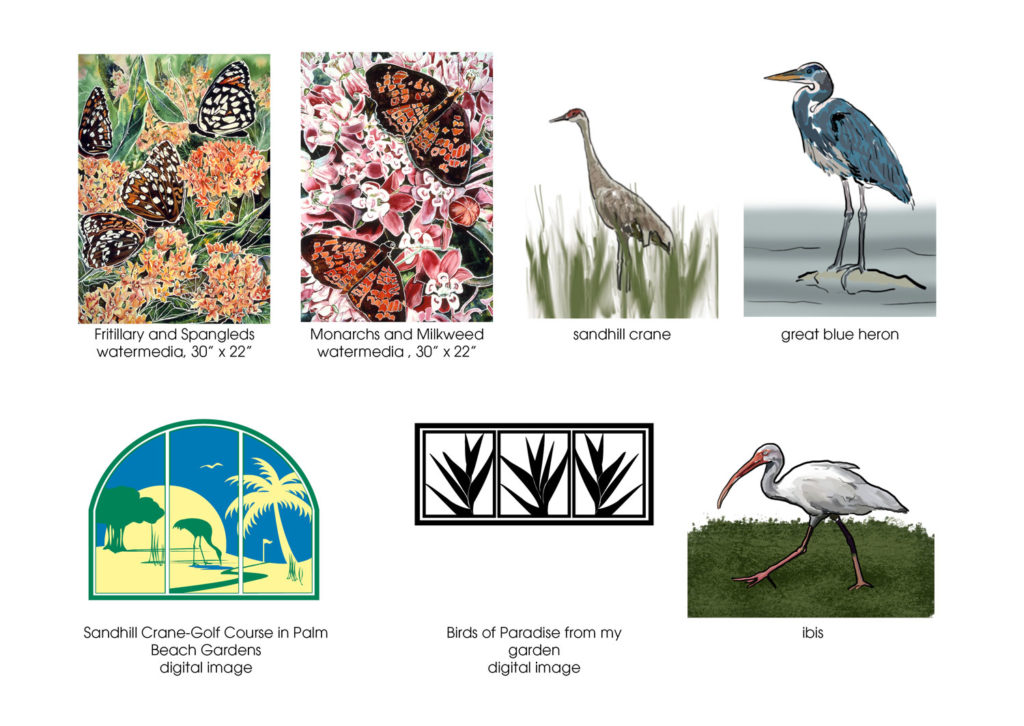
Introduction
When I applied for an artist in residence position at Necedah National Wildlife Refuge I was interested in creating painted images of the Refuge wildlife in watercolor or acrylic. I also wanted to create some graphic interpretations of the wildlife and plant life that I observed at Necedah. I was interested in having an opportunity to observe some of my Florida neighbors such as great blue herons, ibis, and sandhill cranes in their northern habitat. I looked forward to experiencing a natural environment that is very different from the tropical one in which I live.
A week before my residency was to begin I packed and shipped 6 large blank canvases, acrylic paints, brushes, sketch materials bug repellant and sunscreen to the refuge.
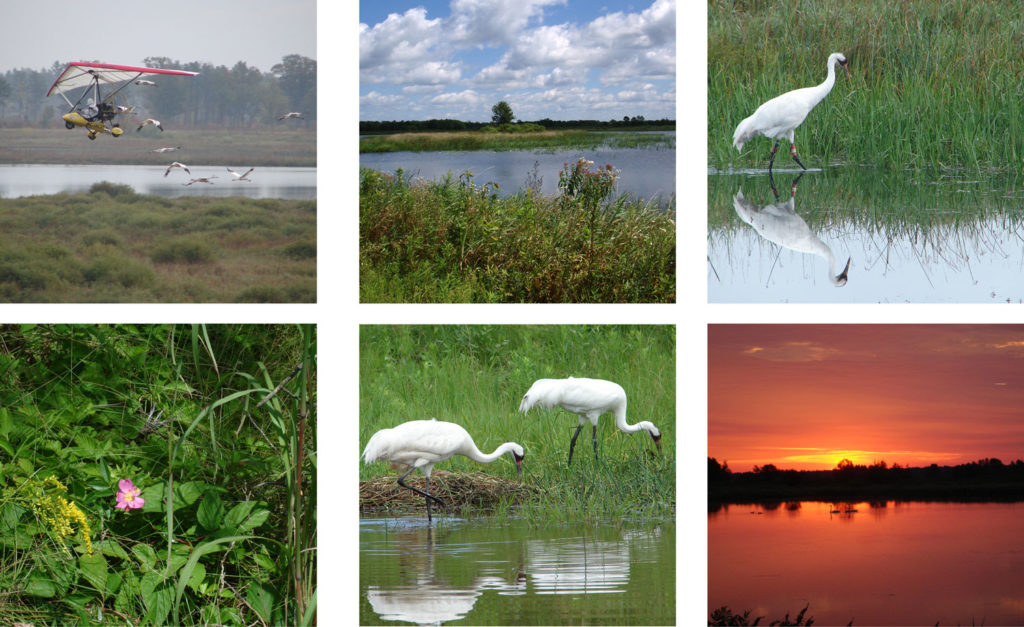
Necedah National Wildlife Refuge
A wildlife refuge is a special area of land that is designated by the government for animals to live freely.
I discovered that the real attraction to Necedah National Wildlife Refuge (NNWR) was the opportunity to see the endangered whooping cranes. A visit to NNWR meant that I would not only have an opportunity to observe the cranes in their native habitat but would be able to see them learning to follow an Operation Migration light plane that would guide the orphaned juvenile birds on their first migration from Wisconsin to Florida. I was very excited about this aspect of the residency. I borrowed books on cranes from the library and read about Operation Migration on the web.
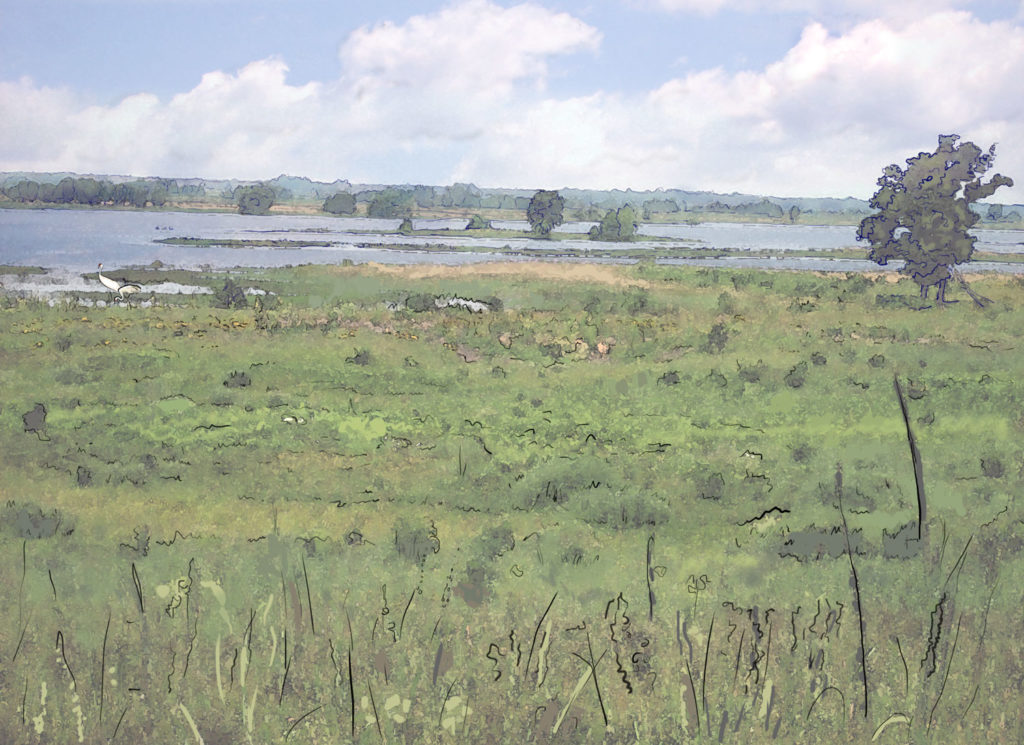
Prairie, Savanna, Woods and Wetlands
At Necedah there are many different animals and plants. It is very beautiful here. There are four different kinds of landscapes, prairie, savanna, woods and wetlands. This painting shows all four landscapes. Up close is the tall grass prairie, a little further away are wetlands, further still is the savanna and far in the distance you can see the woods.
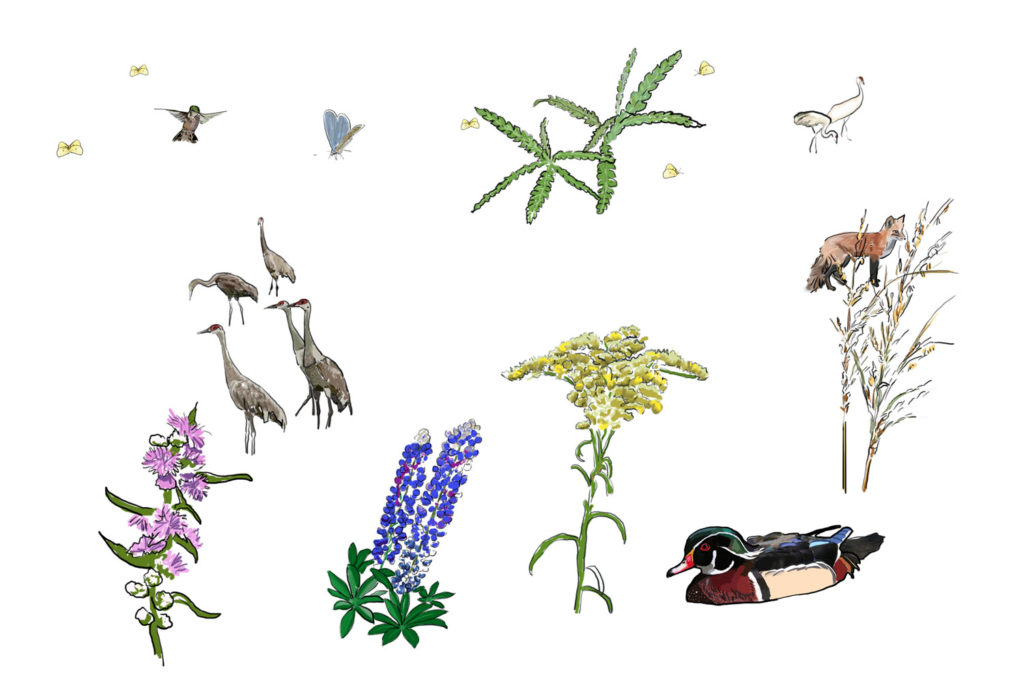
Diversity of Plant and Animal Life
Upon arrival at Necedah National Wildlife Refuge I was immediately struck by the diversity of plant and animal life. I was also very impressed by the friendly welcome that I received from dense clouds of hungry mosquitoes.
My first days were spent being shown around the Refuge. The Refuge landscape varies dramatically from one area to the next. There are densely wooded areas that contain pines and red and white oak. Broad stretches of Savannah and prairie roll gently into wetlands.
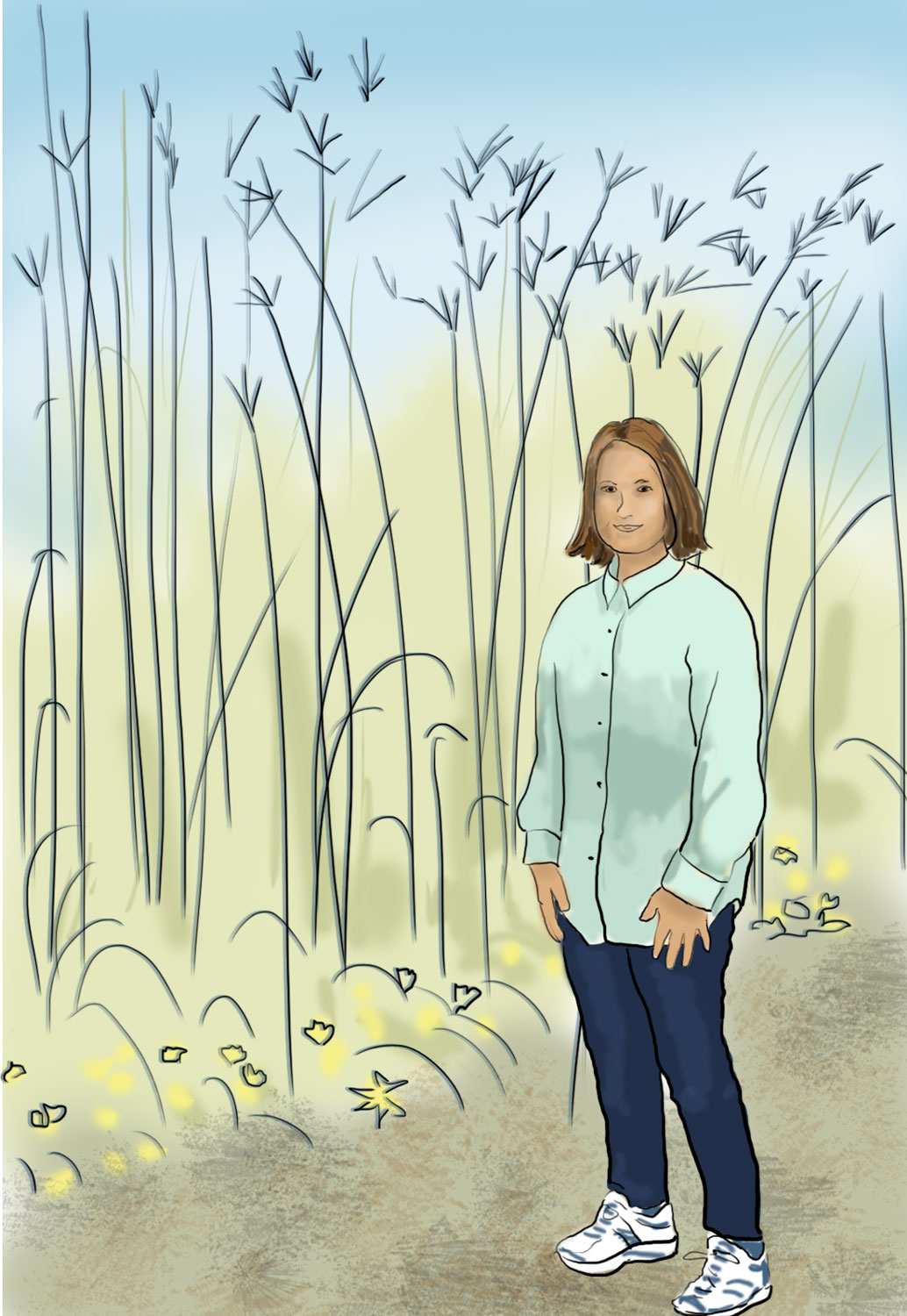
Turkey Foot
I am standing next to some grass that grows on the prairie.
It is called big blue stem. Some people also call it turkey foot.
How do you think it got those names?
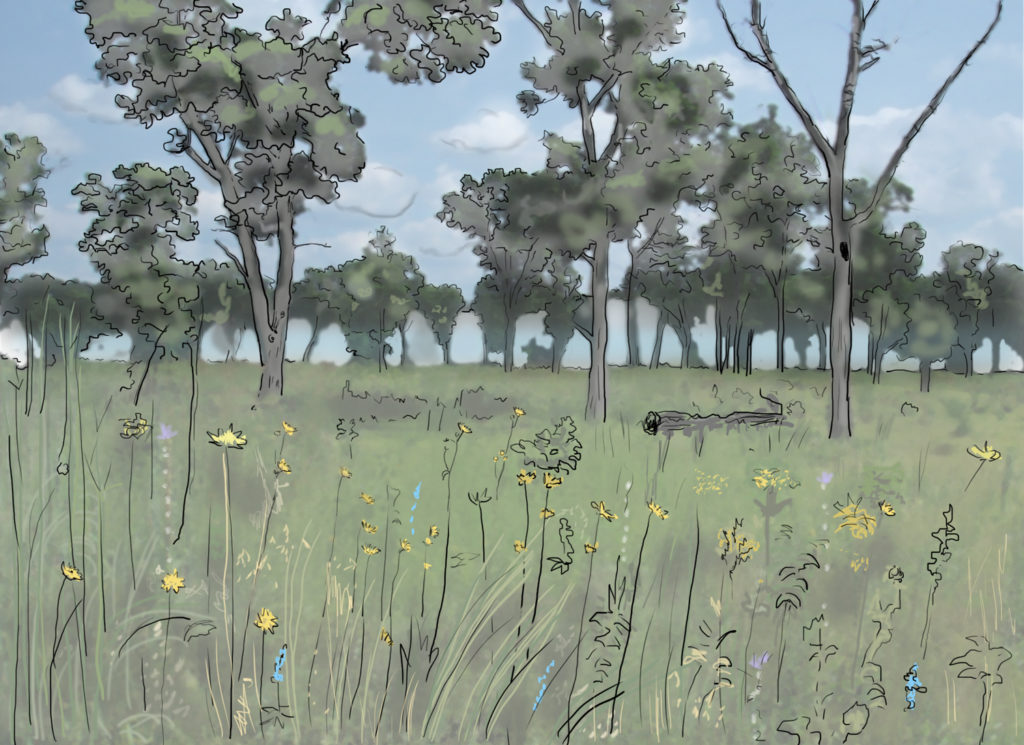
Oak Savanna
The oak savanna is home to many plants, birds, insects and animals. Can you guess the names of some residents of the oak savanna?
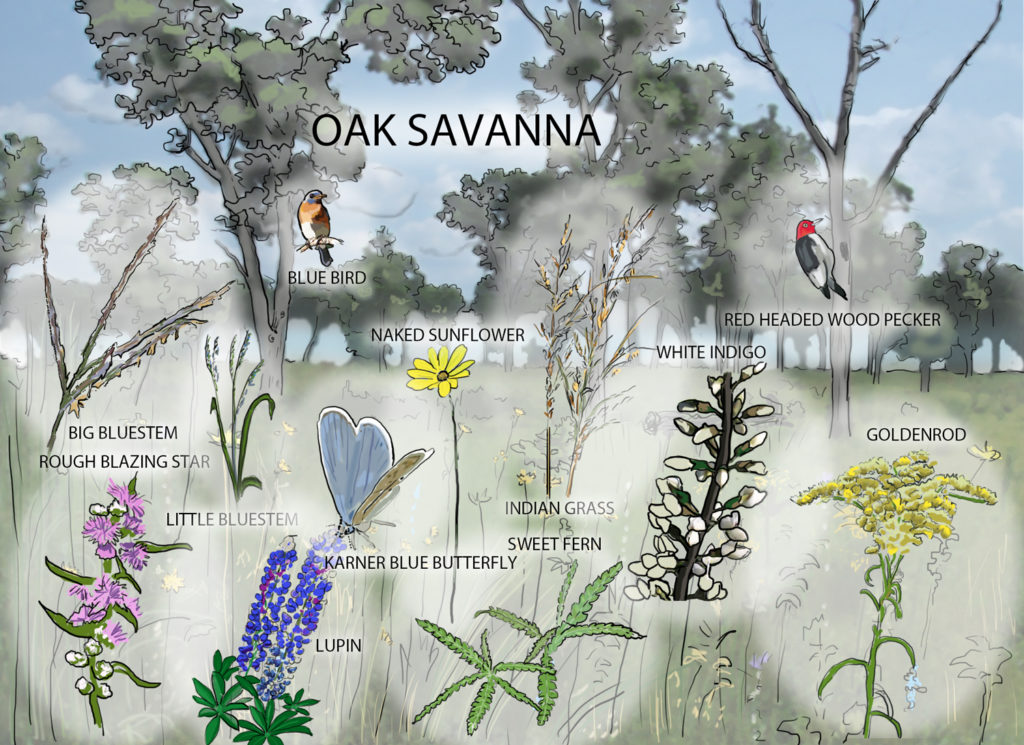
Residents of the Oak Savanna
Blue bird
Big blue stem
Goldenrod
Indian grass
Karner blue butterfly
Little blue stem
Lupin
Naked sunflower
Red headed wood pecker
Sweet fern
White indigo
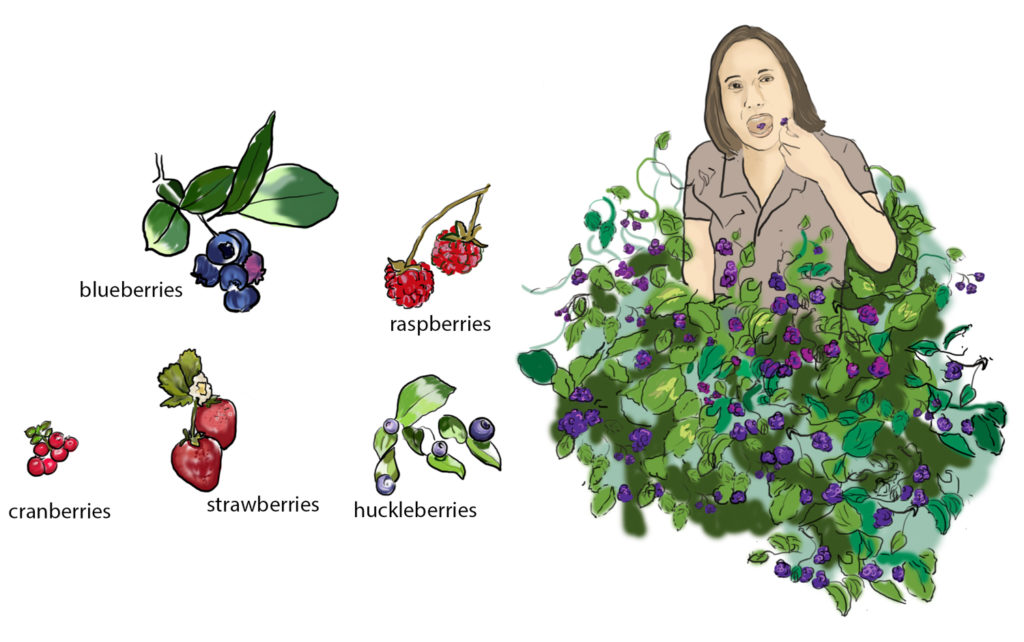
Blackberry Bramble
One day while I was being shown around Necedah National Wildlife Refuge I saw some blackberries growing near the road.
“I am hungry,” I said. “Let’s stop so that I can try the blackberries.” I walked right into the blackberry bushes and began to pick and eat the sweet, juicy berries. When I had eaten enough berries I tried to go back to the road but I could not. Did you know that blackberry bushes have thorns? Many of the thorns had caught on my shirt. I had to carefully remove them, one at a time.
I think that I will look for some other kinds of berries to eat the next time that I am hungry. Can you tell what other kinds of berries grow at the Refuge and in the surrounding area?
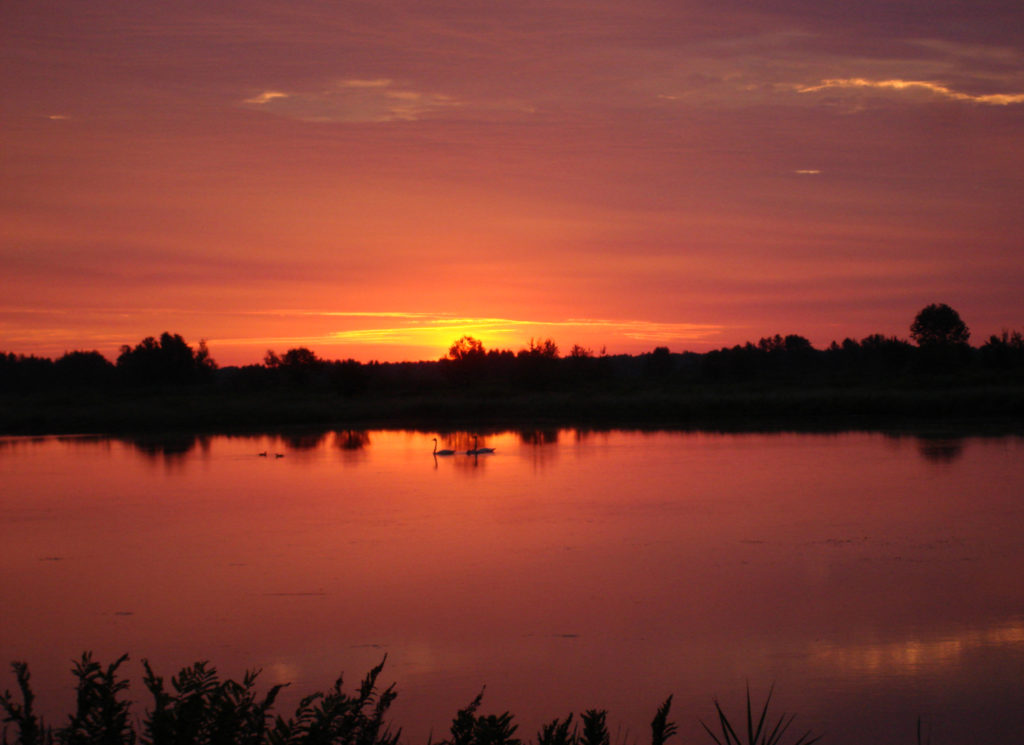
Up Before the Sun
I wanted to draw a picture of some of the things that I did today. But when I saw this photo I decided that it was so beautiful that I must share it.
I got up today before the sun. It was still dark when I arrived at the refuge. I was able to watch the sun rise over the wetlands. As you can see, I shared the beautiful view with a family of trumpeter swans and two wood ducks
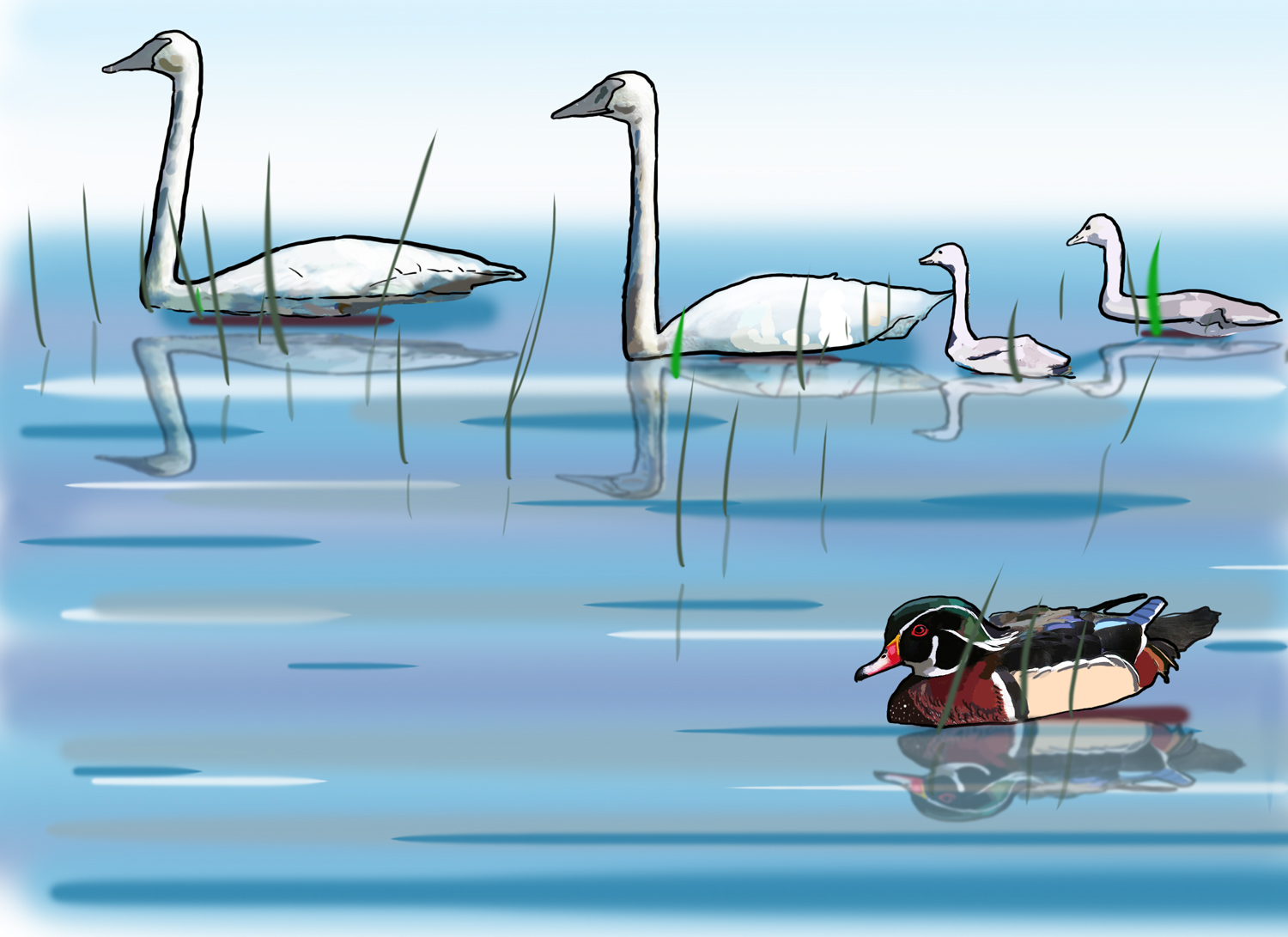
Trumpeter Swans and Wood Ducks
Trumpeter Swans and Wood Ducks are both waterfowl. Waterfowl are birds that swim in and live near the water.
Trumpeter Swans are the largest living waterfowl on earth. Their babies are called signets.
Wood ducks are small colorful ducks that live in wooded swamps and wetlands like the ones at Necedah National Wildlife Refuge. What do you think baby ducks are called?
Ducklings!
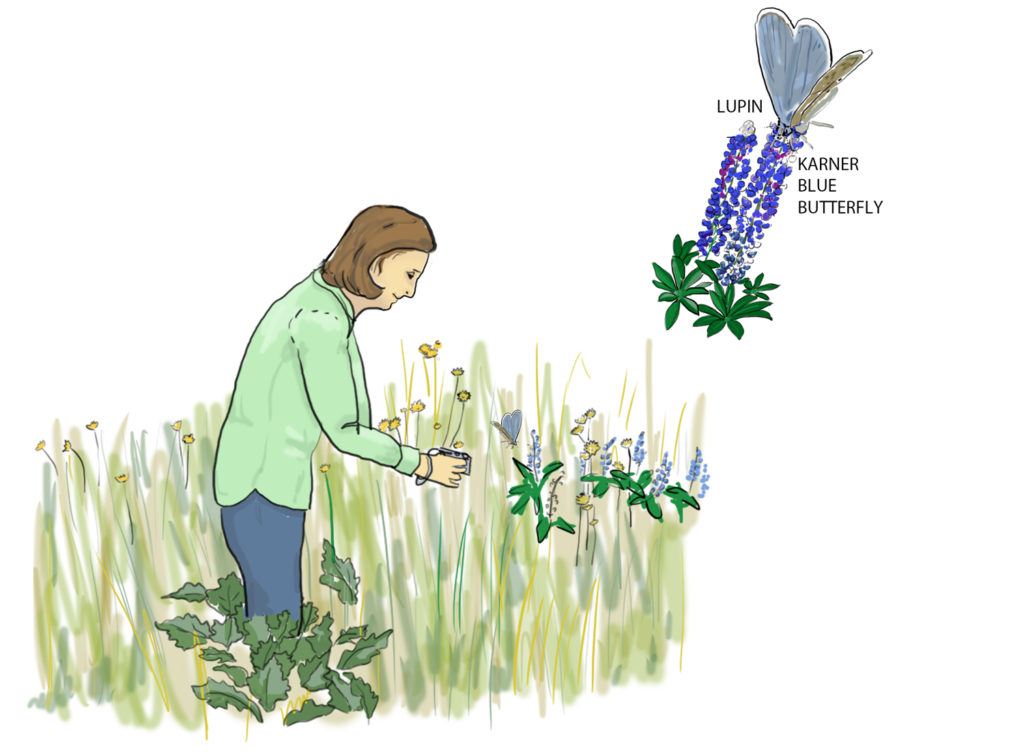
Karner Blue Butterfly
Necedah National Wildlife Refuge is home to an endangered species of butterfly called the Karner Blue. I tried very hard to see a Karner Blue butterfly. Most of them had come to Necedah before my visit but I looked very hard in the places that they like to live; near the lupin plants on the Savanna.
One day I saw a tiny blue butterfly. I got my camera out but I was not quick enough to capture a photo of this very special butterfly.
Do you think that I saw a Karner Blue butterfly?
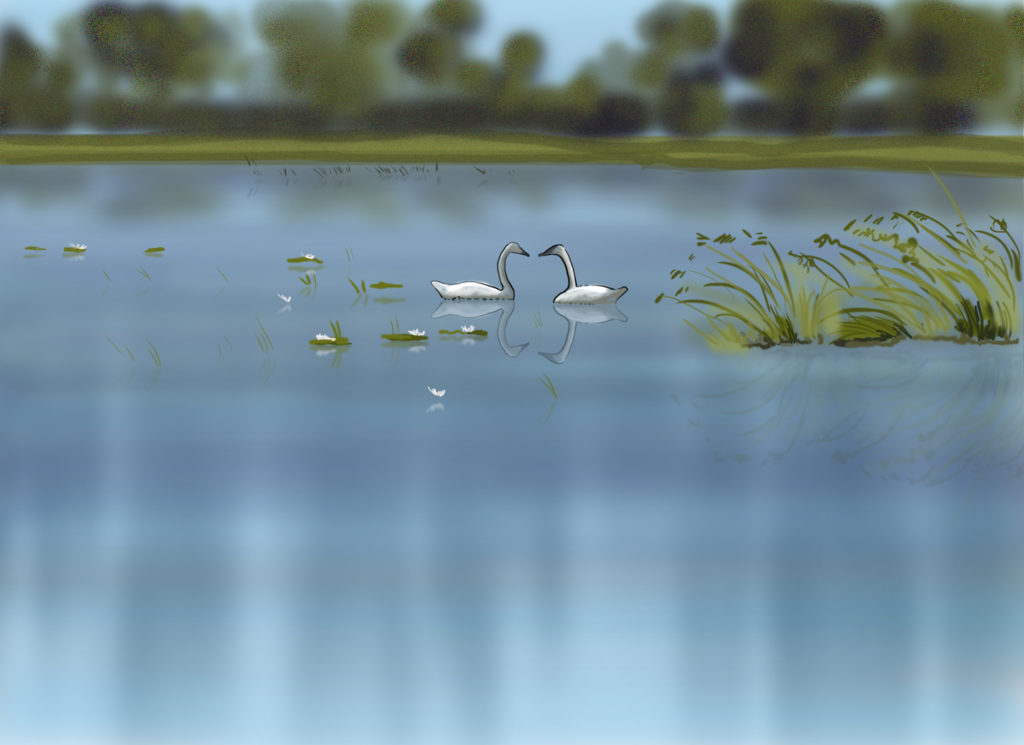
Kissing Swans
These two trumpeter swans were enjoying a swim at the Refuge when they turned to face each other for just a moment. It looked to me as if their necks made a heart shape.
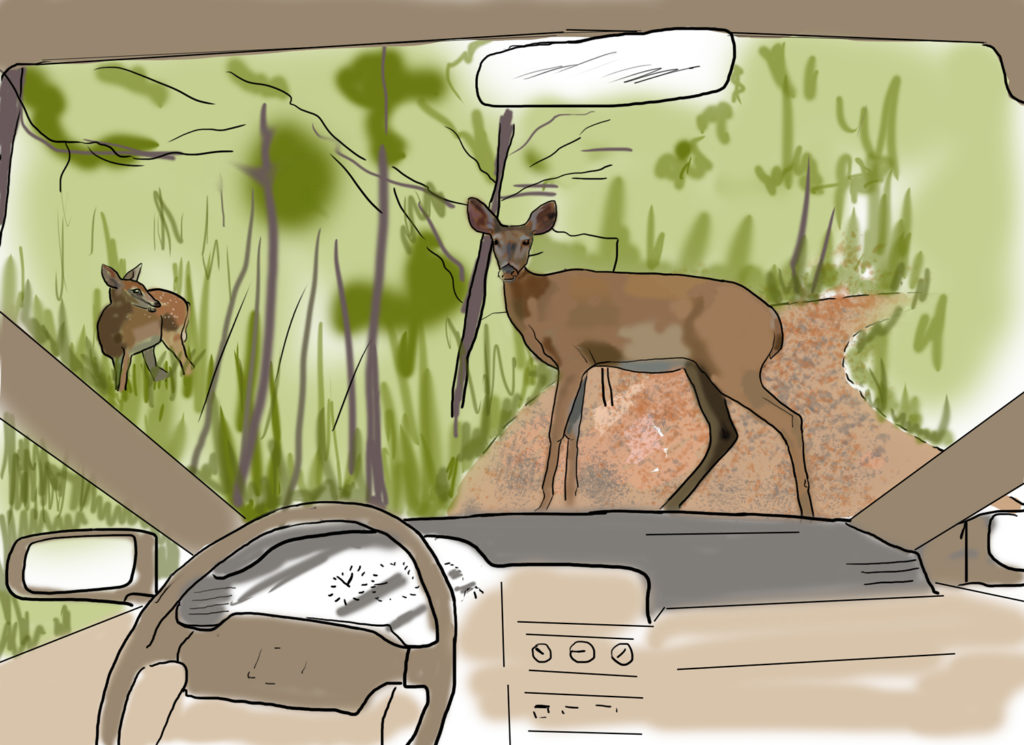
Doe on the Road
Many times when I drive out of Necedah National Wildlife Refuge I see a doe, a mother deer, with her baby fawn.
Often the doe stands still on the edge of the road or directly in front of my car.
I have been trying to understand why the doe does this.
Can you think of a reason?
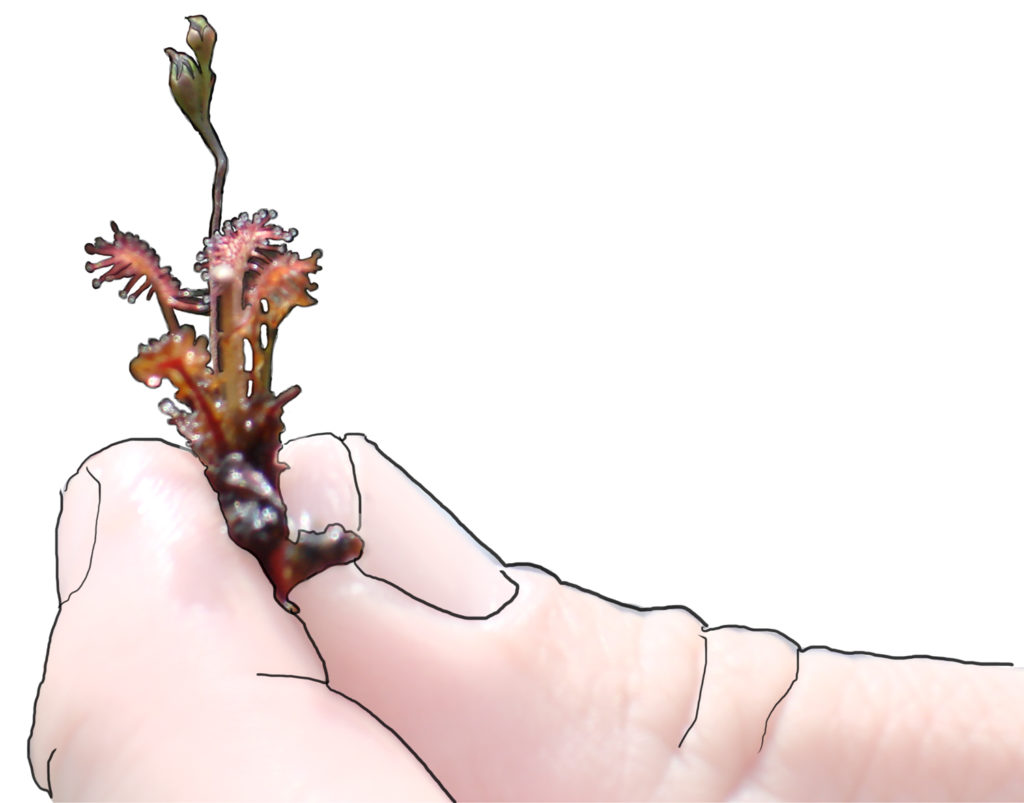
Sundew
Dan Peterson was showing me around some interesting parts of the Refuge one day when he asked, “Would you like to see a carnivorous plant?”
I swatted at an annoying mosquito and asked, “Does this plant eat bugs?”
“Yes, it eats insects. The plant is called sundew.” he told me. “It is right over here on the pond.”
I looked down at the water and was very puzzled. All I saw were areas of slimy stuff on the water.
Dan reached into the water and took a pinch of the slimy stuff and held it up for me to see. I looked closely and was amazed at this complicated tiny plant.
The plant has hairlike stalks that grow out of it. The tip of each stalk has a drop of sticky sweet liquid that is used to attract and trap insects. The plant has enzymes that break down the insect and extract nutrients from it.
Can you see the parts of the plant that catch the insects?
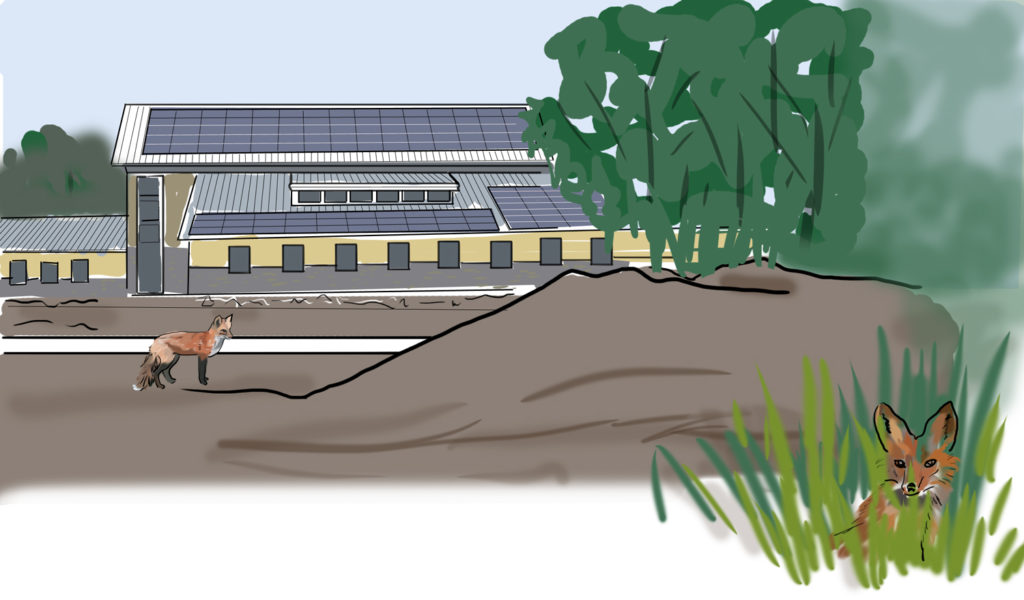
Staring Fox
Necedah National Wildlife Refuge is building a big new visitor center. One Sunday, when the construction crew was not working on the building I went to take a look at the progress. As I walked around the building I realized that I was not alone. A little red fox was checking on the progress of the building too. When the fox saw me it ran into some tall grass. I wanted to take a photo of the fox so I stood still and watched it. The fox stood still and watched me. This went on for quite a while. Finally I told the little fox, “You win the staring contest. I am going to go back to the car.”
Have you ever had a staring contest? If so who won?
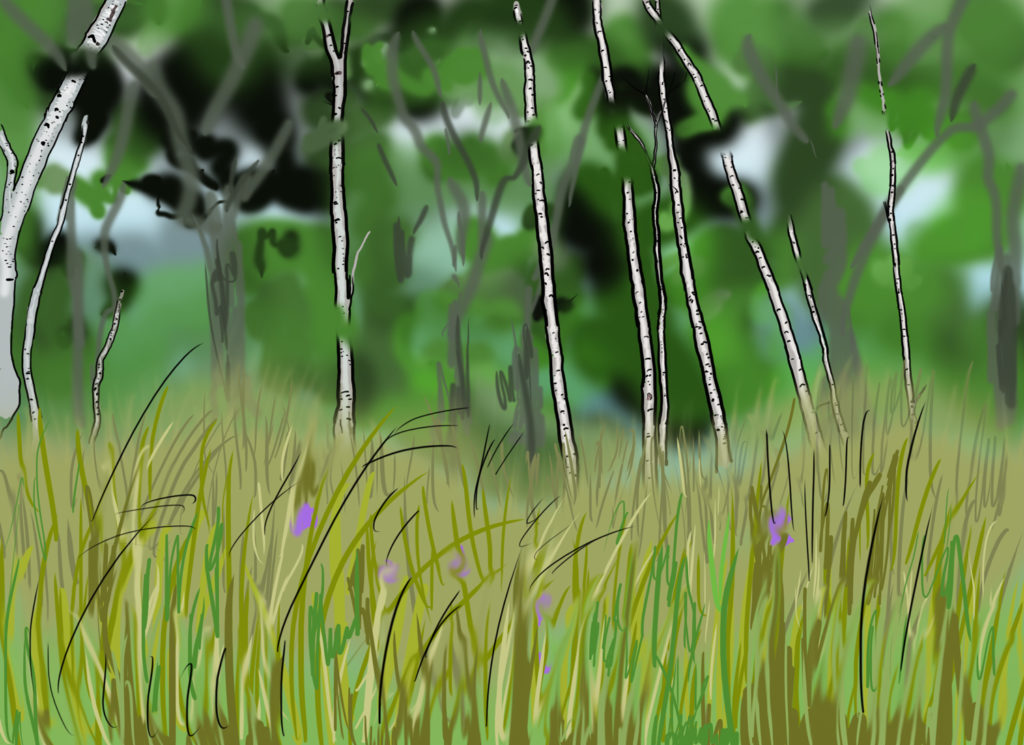
River Birch
At the edge of the woods I saw a group of young birch trees standing tall, gleaming, white against the dark background of the woods. The young birch trees reminded me of soldiers standing guard over the woods.
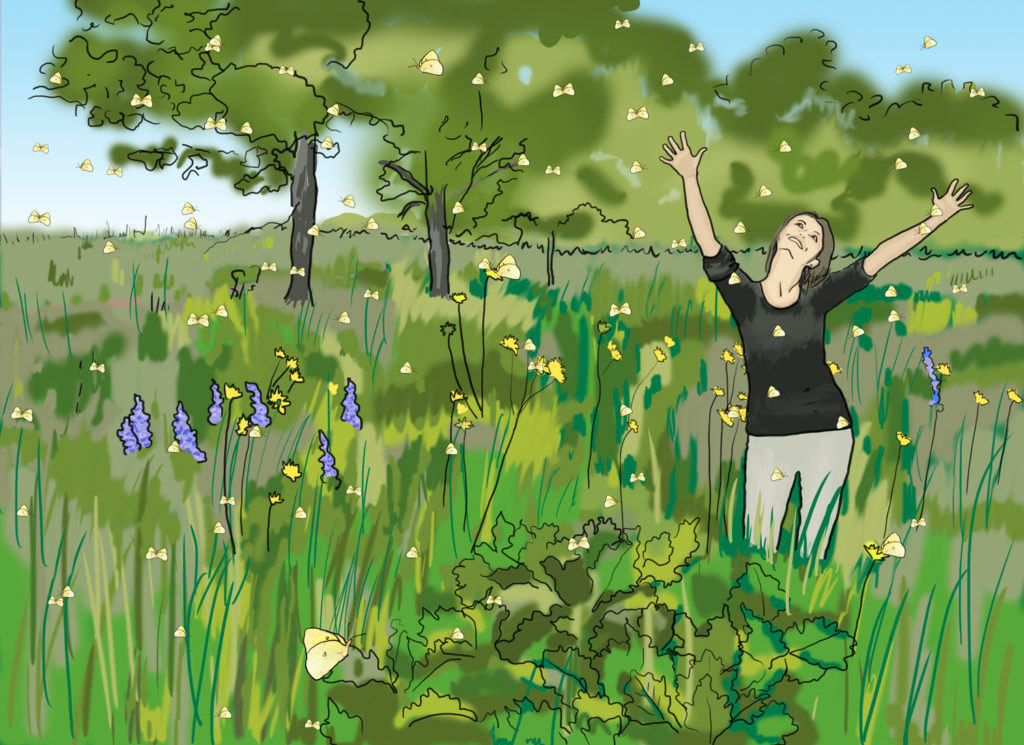
Yellow Butterflies
One day while I was on the savanna, near the lupin, looking for Karner Blue butterflies I experienced something delightful. Hundreds of tiny yellow Sulphur Butterflies were flying all around me.
There are too many for me to count. Can you count the butterflies?
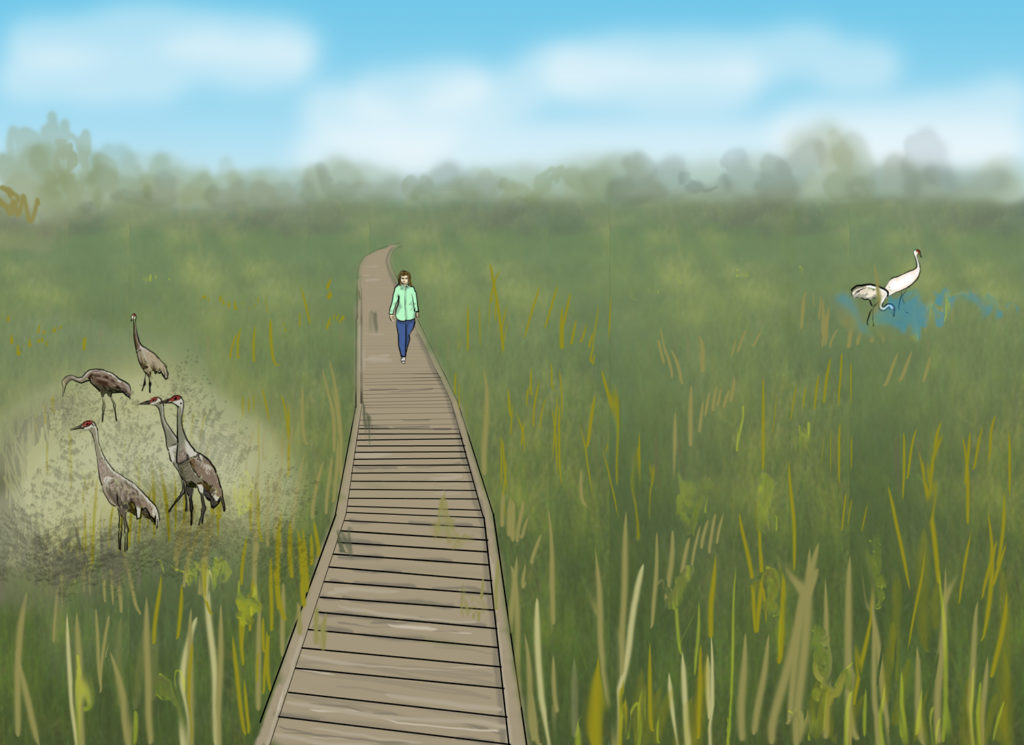
Crane Conversation
I enjoyed walking on the boardwalk that was built over a wetlands area. I was walking very close to a group of sandhill cranes that were on a sandy hill. They called out loudly, “Kar-r-r-o-o-o, kar-r-r-o-o, kar-r-r-o-o-o.”
From a great distance away a pair of whooping cranes answered, “Kar-r-r-o-o-o, kar-r-r-o-o, kar-r-r-o-o-o.”
The sandhill cranes responded, “Kar-r-r-o-o-o, kar-r-r-o-o, kar-r-r-o-o-o.”
And again the whooping cranes replied, “Kar-r-r-o-o-o, kar-r-r-o-o, kar-r-r-o-o-o.”
About what do you think they were conversing?
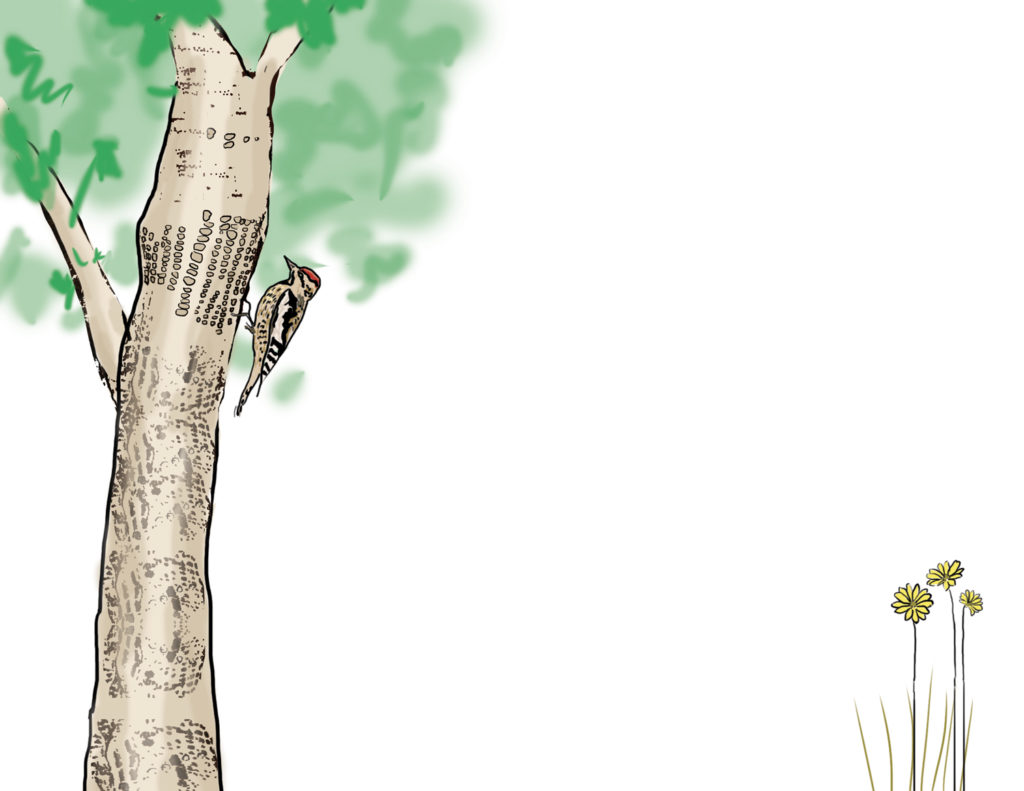
Funny Names
I learned about two things that live at Necedah National Wildlife Refuge that have funny names.
I saw a tree trunk that had many tiny holes bored into it. The holes were very orderly and lined up nicely. I asked, “How did all of those holes get into the tree trunk.” The answer is below.
The other funny name that I learned was “naked sunflower”. How do you think this plant got its name?
Answers:
The holes in the tree were made by a woodpecker called a “yellow bellied sapsucker.” The woodpecker pecks away at the tree trunk until there is a little hole. Sap from inside the tree flows into the hole. The sapsucker drinks the sweet sap from the tree.
This is the naked sunflower. It grows on the prairie and savanna areas at the Refuge. It got its name because the stems are naked. They do not have any leaves growing on them.
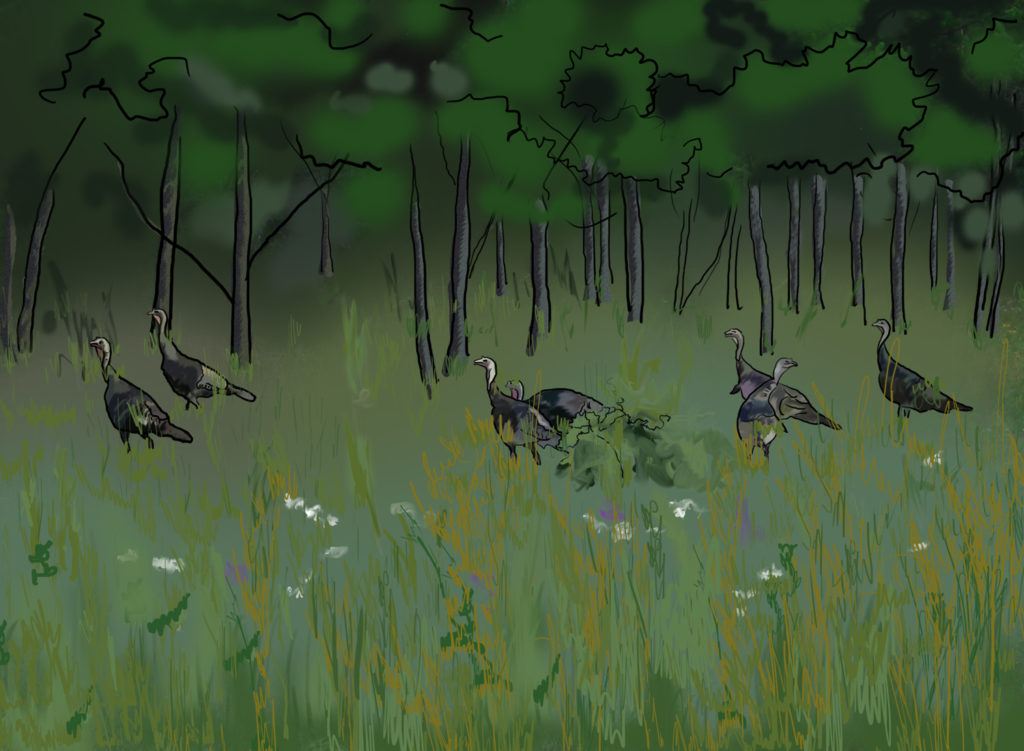
Wild Turkeys
There was a wild turkey in the visitor area of the Refuge office. This turkey was once alive but now it was stuffed and stood in a large glass case.
I wanted to see a wild turkey in the wild!
All of the people who I met at the Refuge have seen wild turkeys. They said to me, “Wild turkeys are everywhere. They are easy to see. We see them all the time.”
I looked for wild turkeys everyday.
Finally, after I had been at the Refuge for ten entire days I saw wild turkeys late one afternoon. Seven turkeys were walking around near the side of the road. When they saw me trying to take their photo they ran into the woods.
Do you think that I frightened them?
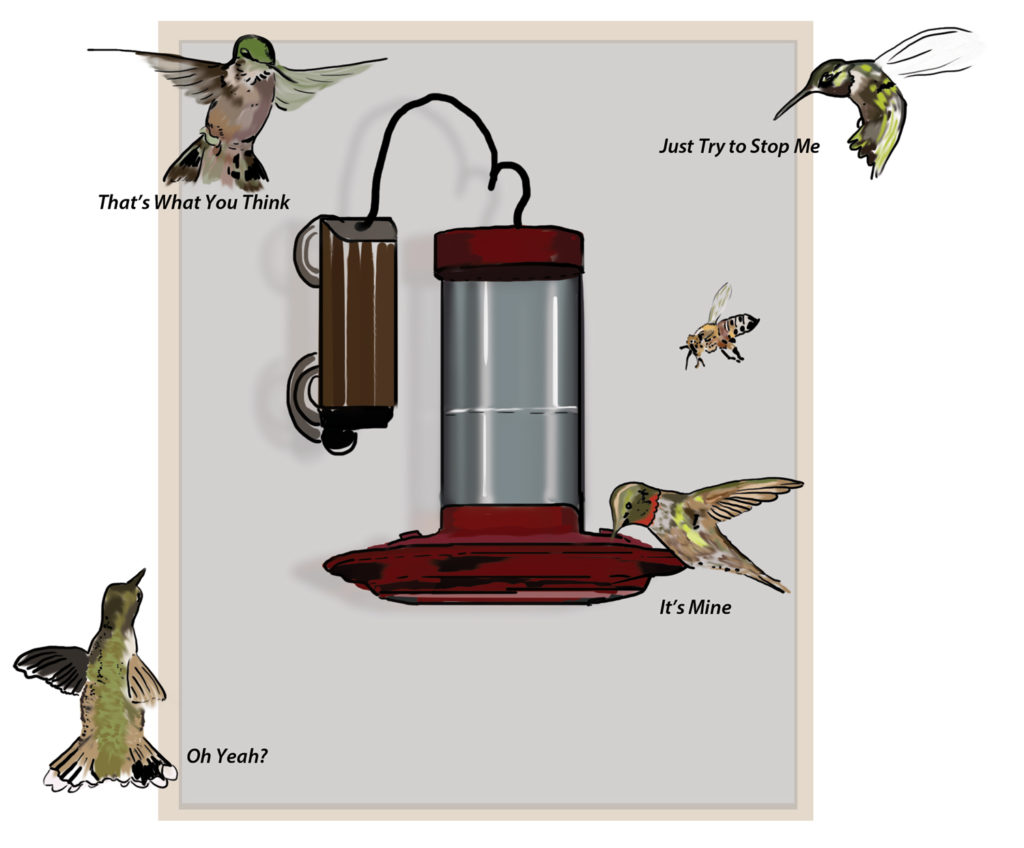
Hummingbird Competition
My friend, Trish lives at the Refuge. A hummingbird feeder hangs outside of her window. The hummingbirds and one fierce bee compete for turns to sip nectar from the feeder.
Trish has named them based on their competitive styles.
Is there something for which you often compete? What is your competitive style?
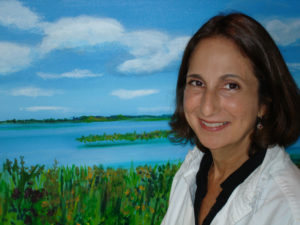
Thank you for sharing my adventure with me
One of the highlights of my trip was learning about and watching the training of juvenile whopping cranes in order to save them from extinction. You can learn more about the cranes from the Operation Migration video link below.
Interactive Oak Savanna
Scroll to discover flora and fauna on the savanna. Please allow a minute for the hidden pictures to load.
Interactive pop up images of flora and fauna are part of a set of more than twenty drawings that I created while working as an Artist in Residence at Necedah National Wildlife Refuge in Wisconsin. I used the digital drawings as a means to journal my experiences, as well as a way to educate young visitors to the refuge about the biodiversity at Necedah. The Interactive Savanna was my gift to the Refuge and became part of their website.

